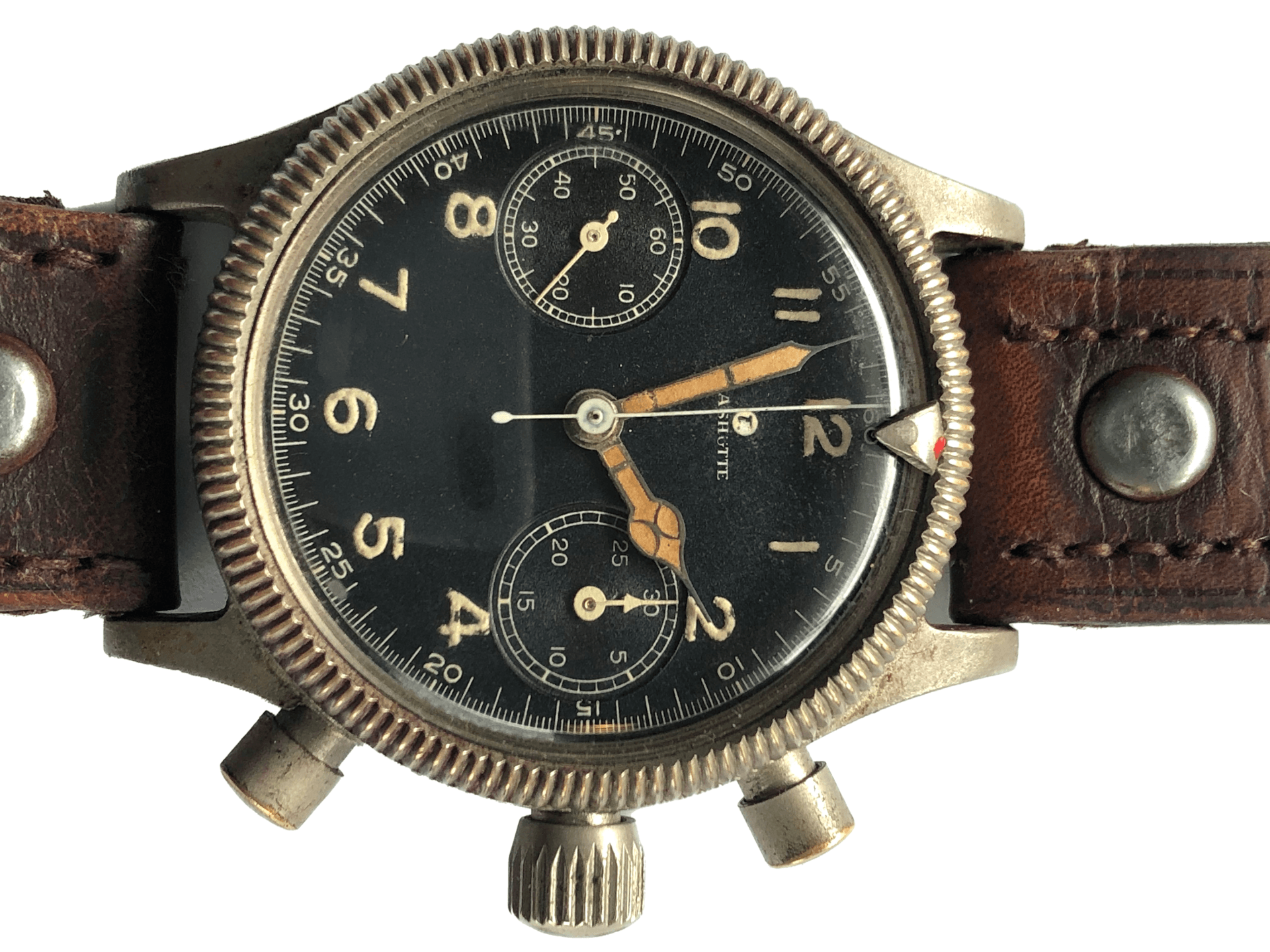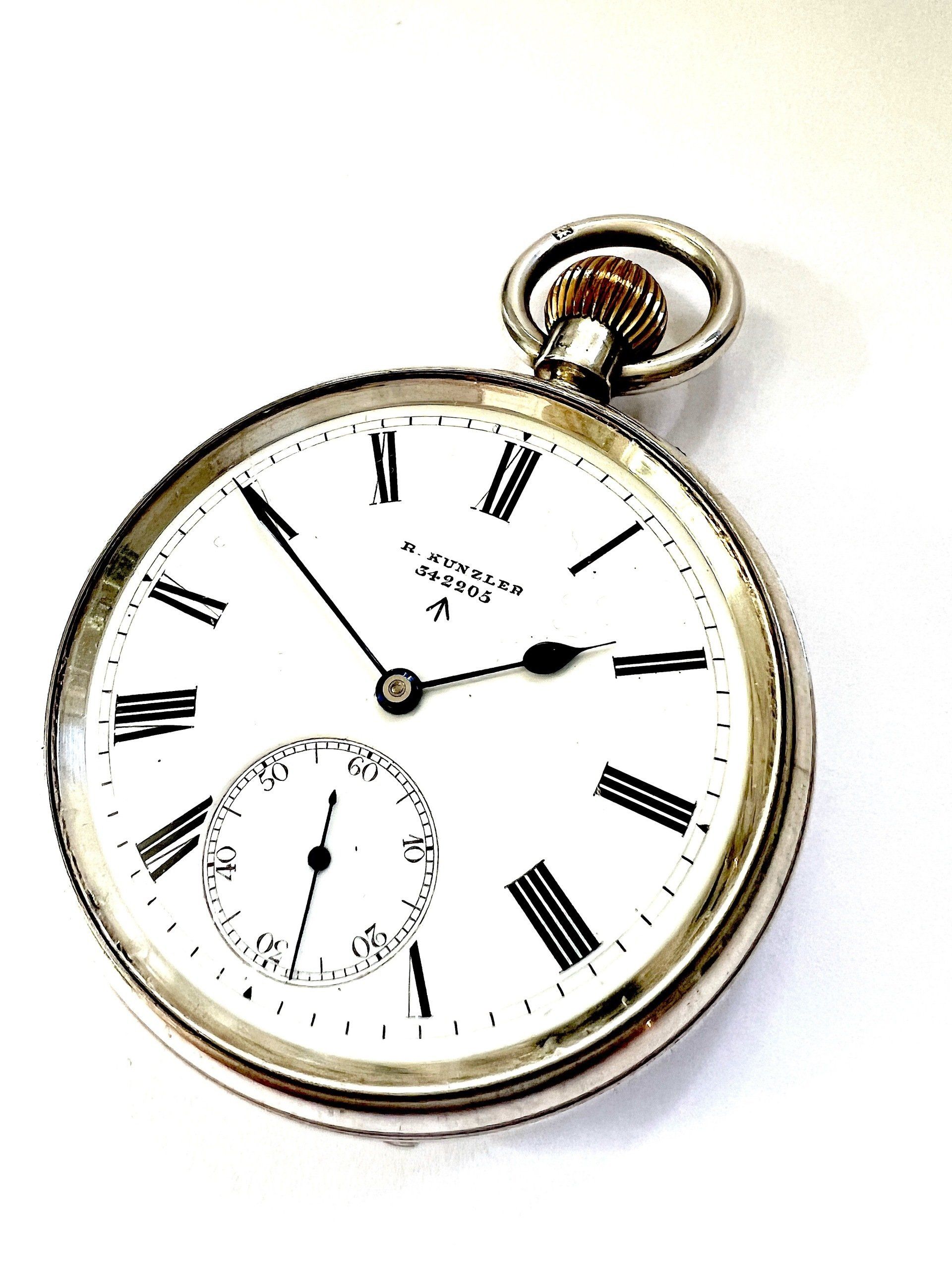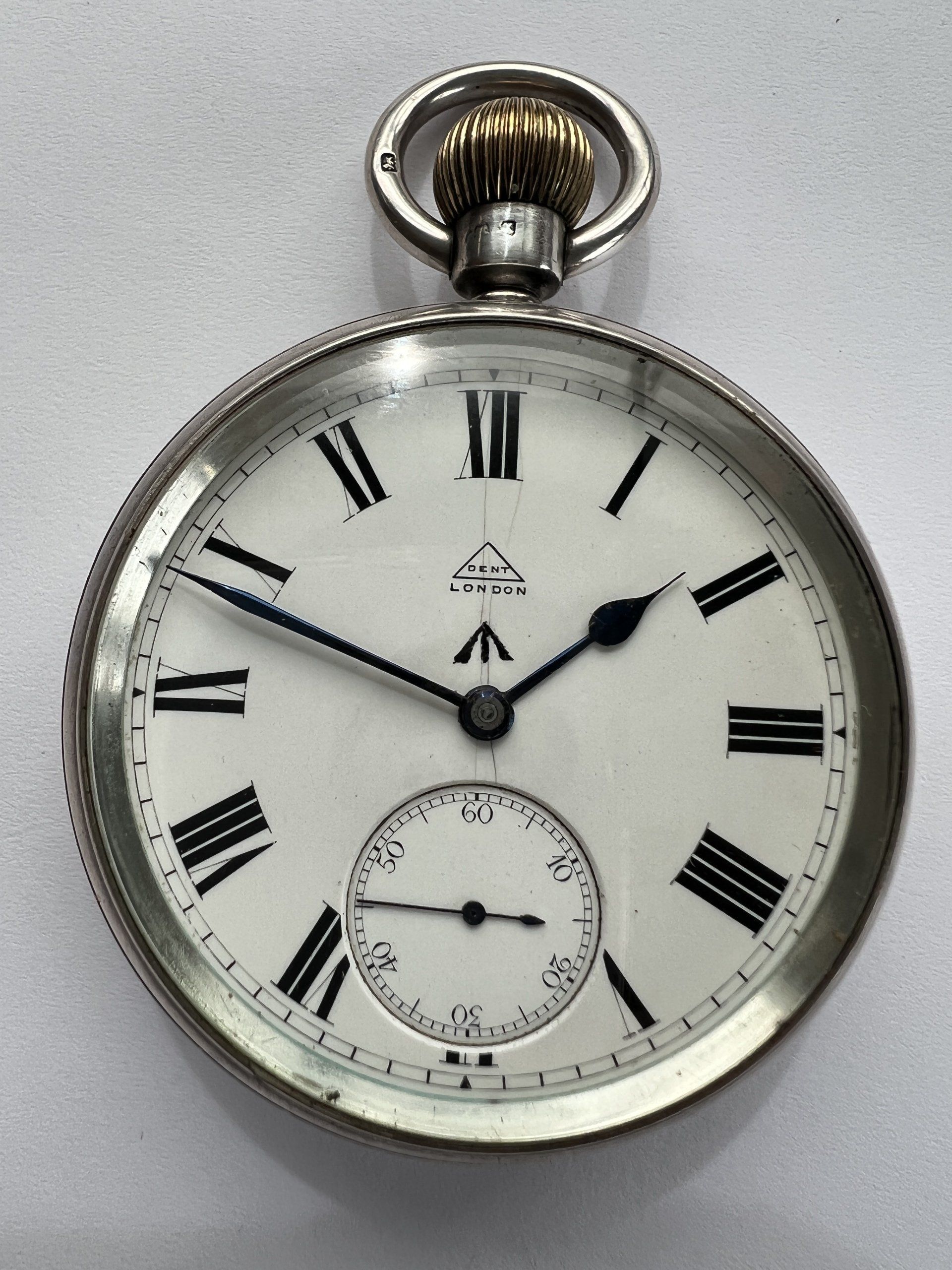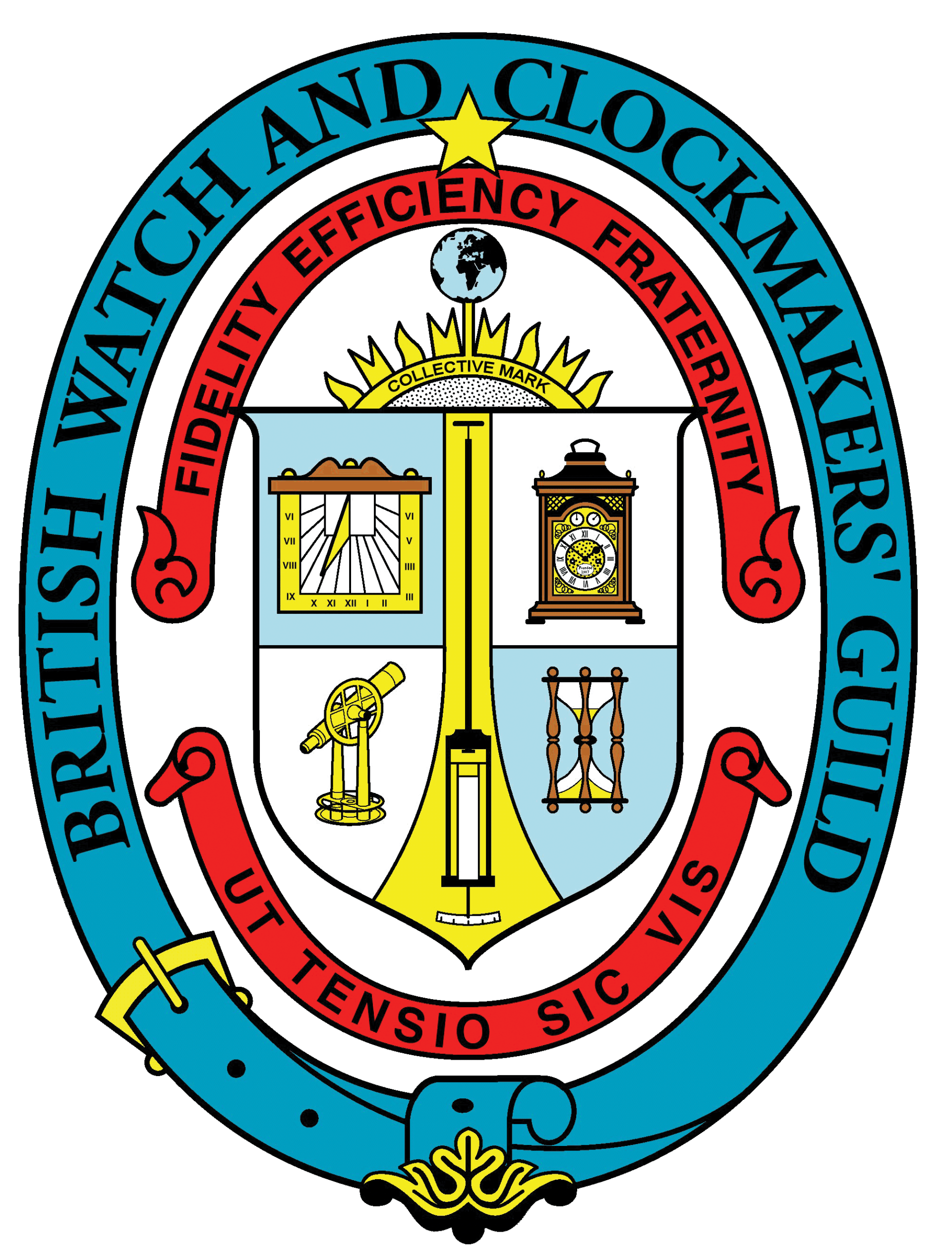Featured timepieces

This watch has recently been in my workshop for a service. This is a wonderful example of a WW2 Luftwaffe Glashutte Tutima chronograph and it is No.202152 The case is in heavy nickel-silver plate over brass and it is in excellent overall condition. The outside of the rear case cover has the engraved watch/movement number 202152 Inside of the rear case cover has the machine stamped wording 'WASSERGESCHUTZT' (water resistant) along with manufacturers name and location 'UHRENFABRIK AG. GLASHUTTE (Sa)'. The watch has a Urofa 15 Ligne Calibre 59 chronograph movement with 21 jewels, mono-metallic screw balance and self-compensating Breguet hairspring. The movement has the matching number to the case number. The early quality watch movement has mercuric gilt plates and bridges plus fine regulation. The fitted plexi-glass is the original glass fitted to the watch from new. The original crown is the rare extended type and is in very good condition. The watch movement was removed to allow for a lubrication service and photography Early WW2 Tutima Watches in this condition are very rare and are now extremely difficult to find for sale on the open market. This watch is not currently for sale but if you are looking to purchase a similar WW2 Tutima or Hanhart chronograph please contact me to discuss availability as I normally have a wide range of watches for sale which do not all appear on my website.

This watch has recently been in my workshop for a service. WW2 Luftwaffe Glashutte Tutima chronograph No.200900 . The case is in heavy nickel-silver plate over brass and is in remarkable condition. The outside of the rear case cover has the engraved watch/movement number 200900. Inside of the rear case cover has the machine stamped wording 'WASSERGESCHUTZT' (water resistant) along with manufacturers name and location 'UHRENFABRIK AG. GLASHUTTE (Sa)'. The watch has a Urofa 15 Ligne Calibre 59 chronograph movement with 21 jewels, mono-metallic screw balance and self-compensating Breguet hairspring. The movement has the matching number to the case number. The early quality watch movement has mercuric gilt plates and bridges. The fitted plexi-glass is the original glass fitted to the watch from new. The original crown is the rare extended type and is in very good condition. The watch was stripped down to every component part followed by cleaning, inspection, rebuild and lubrication. A new mainspring was fitted as after 80+ years the mainspring can assume a permanent set and lose power. The watch was then rebuilt followed by testing and adjustments for timekeeping and chronograph functionality. The original strap was restitched and restored. Early WW2 Tutima Watches in this condition are rare and are now extremely difficult to find for sale on the open market. If you are looking to purchase a WW2 Tutima or Hanhart chronograph please contact me to discuss availability.

Watch Description:- Richard Kunzler Hack Watch No.342205 Maker: Model: Hack Watch Date:- 1912 Case diameter ex crown: 52mm Case material: Silver Case number: 357 M Case date stamp: 1912 Case maker mark : R&S (Rotheram & Sons Coventry) Movement markings: R.Kunzler. BIRMINGHAM 342205 Movement type: crown wind and set, gilt, 3/4 plate movement with lever escapement, cut bimetallic balance, gold timing screws and blue flat balance spring Richard Kunzler was a very interesting character who was employed at the Royal Observatory for many years. Here are some words regarding his history which I found on the Royal Observatory web-site :- During the 1914–18 war the “Admiralty” was most anxious to purchase as many chronometer watches as possible provided they were capable of passing the acceptance test. Robert Kunzler one of the best suppliers was a native of Switzerland, born near Le-Locle about 1870. He was a student at the Le Locle Technicum and after becoming a journeyman travelled in Germany before arriving in England about 1900. He worked for a time at the Erhardt factory in Coventry but it soon became apparent to him that no one in England understood or was very competent in the art of Springing and Adjusting. He decided to return to Switzerland for a special course in high precision watch adjusting at Le-Locle. After completing the course he returned to Birmingham, England, and was employed at the Waltham Watch Co., in Great Hampton Street. He later decided to go into business on his own as a Watch Springer and Adjuster, he would do this work for other makers. He was a close associate of J. W. Player and Forrester two famous makers at the time. Forrester was also Swiss. Kunzler was soon submitting watches in his own name to the “Observatory” and by 1912 he was having his own movements made by Pybus at Prescott. These were mainly of the famous 3/4 plate type with centre-seconds suitable for the Admiralty Chronometer Watch. He had of course the best of Coventry and Birmingham workmen to assist in making his watches. The escapements were made by Smith, jewelling by Collingbourne, and the finishing was done by White. Kunzler completed the watches by doing his own springing, adjusting, and rating to high standards. During the 1914–18 war he was most industrious completing watches in record time and delivering them to Greenwich. After the war the Admiralty had little demand for navigation watches but Kunzler was always well employed servicing his own watches which were always satisfactory.

Watch Description:- E. Dent & Co. Hack Watch No. 52872 Maker: E.Dent & Co. London Model: Hack Watch Date:- Purchased Sept. 1906 for £5 Case diameter ex crown: 53mm Case material: Silver Movement markings: DENT, Nr.52872, Watchmaker to the King, London, 61 Strand & 4 Royal Exchange Movement type: free sprung lever fusee pocket watch, crown wind and set, gilt, full plate movement with lever escapement, cut bimetallic balance, gold timing screws and blue flat balance spring Case number: 908 Date stamp: 1900 This watch has had an interesting life since it was first purchased by the UK Ministry of Defence in September 1906 for £5 ! Details of the history of the watch are recorded at the Royal Observatory in Greenwich London. Initially used at the Coloba Observatory in Bombay the watch was later serviced by the well known watchmaker Sidney Better and went on to do service on the Nelson Class Battleship HMS Rodney, the S Class Destroyer HMS Scimitar and HMS Salmon which was an S Class Submarine. The watch is still working well and keeps excellent time after 122 years since it was made in 1900 !

Watch Description:- Hector Golay & Son Ltd. London - Fairey Swordfish Dashboard Watch No. 734 Importer: Hector Golay & Son Ltd. London Model: HS4 - Dashboard Watch Date:- Circa 1942 Case diameter ex crown: 62.5 mm Dial Diameter: 55mm - dial marked 734 + Hector Golay & Son Ltd. LONDON Case material: Steel chrome plated case and screwed case back marked HS4 Stores Ref. H.S.527-3638 Movement: Swiss - marked 734 Dial with black Roman numerals blued spade hands, centre seconds, chemin de fer chapter ring and outer minute track, the outer rotatable front bezel in black marked out in degrees with case mounted locking screw at 1 o'clock, the Swiss unsigned mechanical crown wind movement with onion shaped winder, the base metal case, 62mm diameter, with screw down back, verso engraved H^S.4. The watch is housed in a plastic case marked STORES REF H.S.527-3638. The case is designed so that the watch can be dashboard mounted and easily demounted for maintenance etc.. This type of watch was used by the Fleet Air Arm in Fairey Swordfish aircraft during WWII. The 1941/1942 Admiralty Manual of Navigation describes this style as a beacon watch, only to be used in aircraft fitted with an R1147 radio receiver. Aircraft carriers were equipped with a revolving beacon that continuously transmitted second pulses, making a full rotation once per minute. The crucial feature of this system was that the beacon emitted a different sounding signal when it was pointing due north. Prior to launch, (these planes were catapulted into the air), the observer would tune the radio receiver to the beacon and set the bezel of the watch so that zero on the outer scale and the tip of the second hand aligned precisely at the time of the northern signal. When returning to the carrier, the observer on board the aircraft would turn on the radio and listen for the beacon's signal. The strongest reception would be experienced when the beacon was pointing directly at the aircraft and, using the watch, the aircraft's position relative to its carrier could be found and the pilot given the course to take. The great benefit was that these slow aircraft could home in on their carrier from up to 100 miles away without sending out radio signals that may betray their position to the enemy. In 1937 Hector Golay & Son Ltd of London were the only importers of Universal watches and chronographs and supplied the Ministry of Defence with dashboard mounted navigation watches such as this example. H^S.4 designation is described as a 'Dashboard Watch'.
